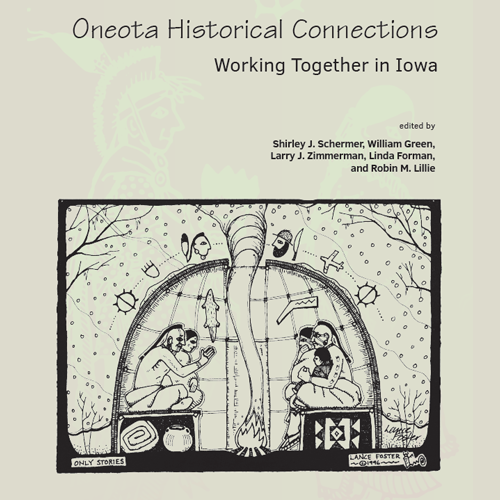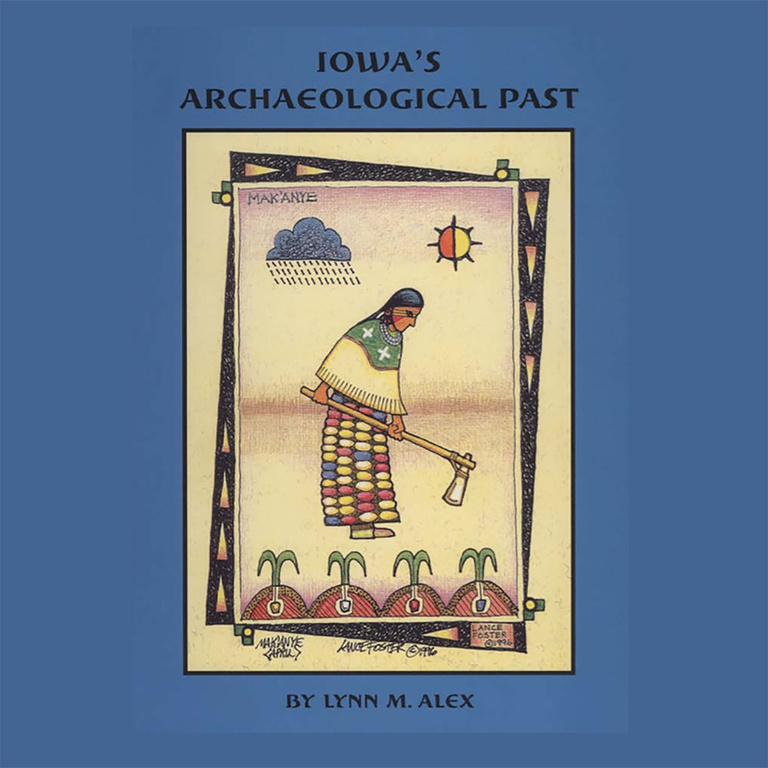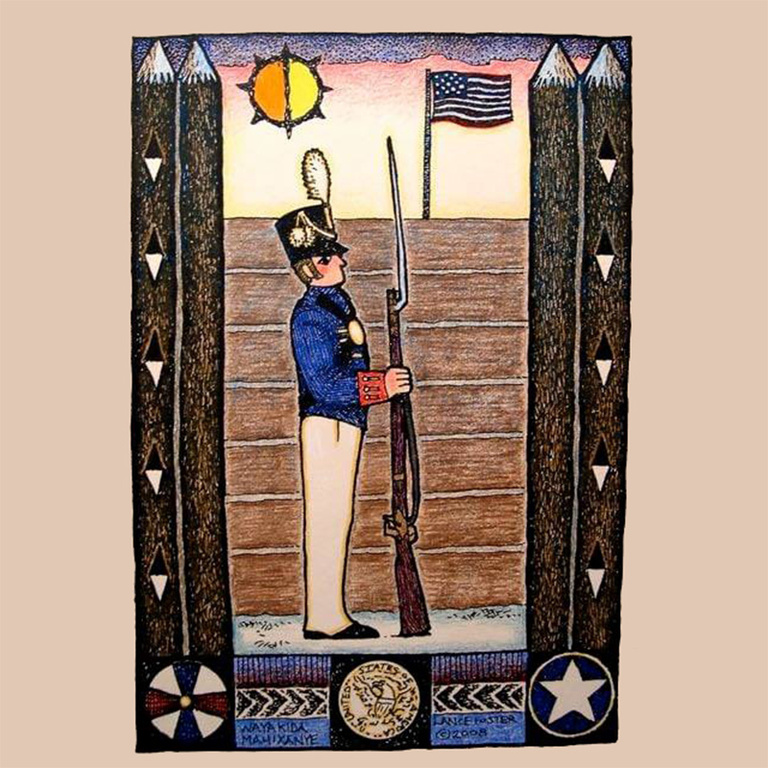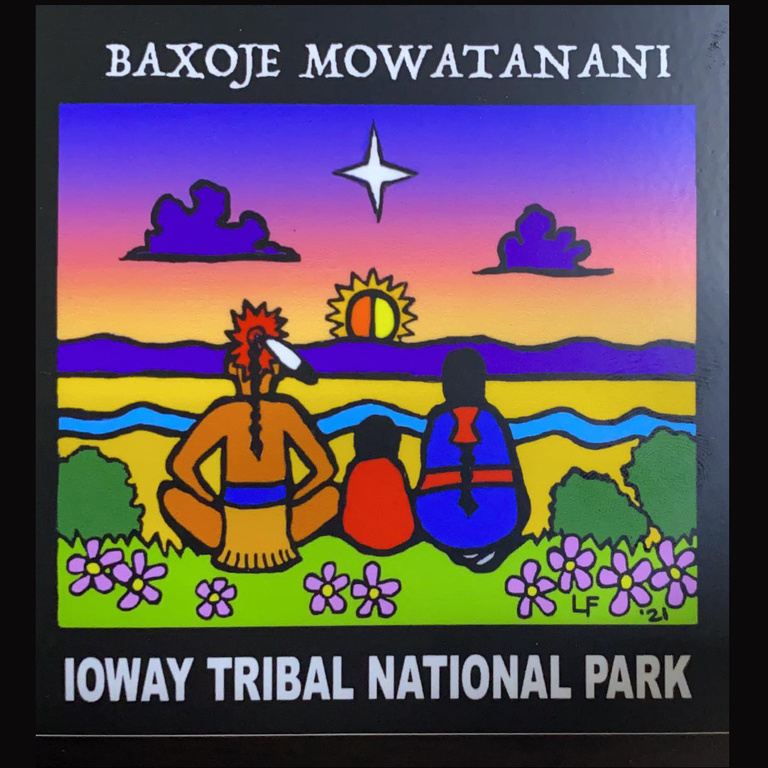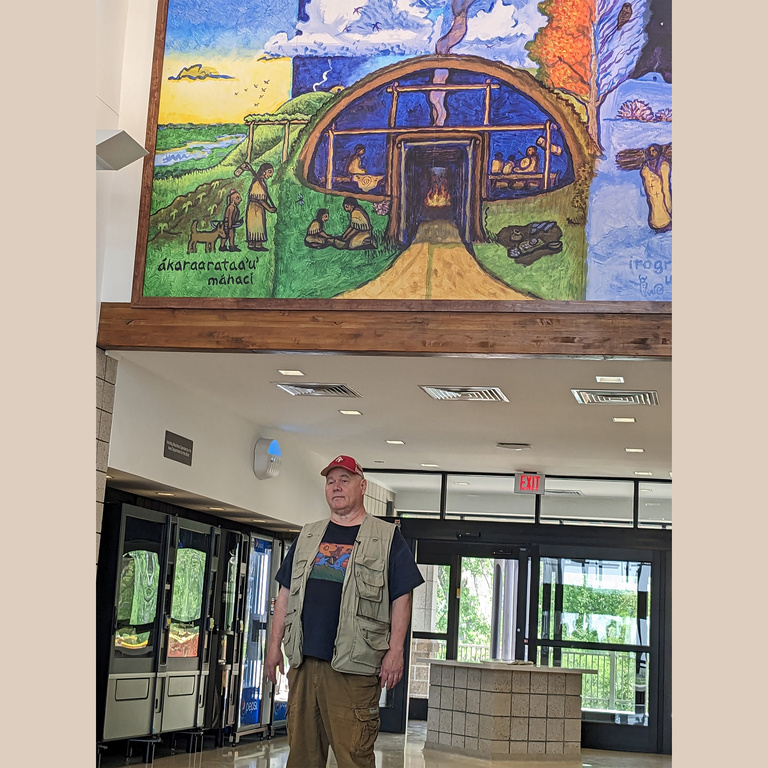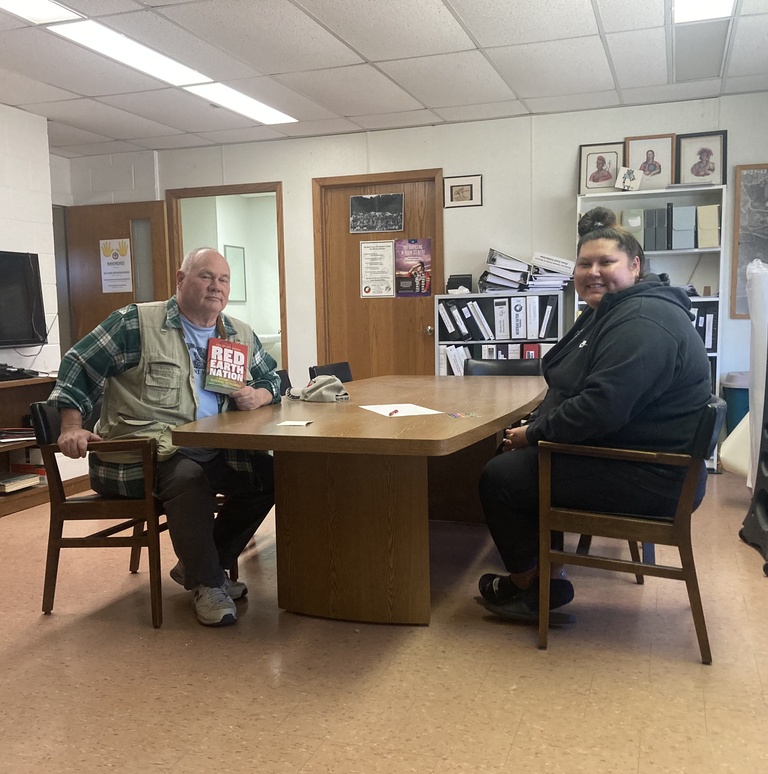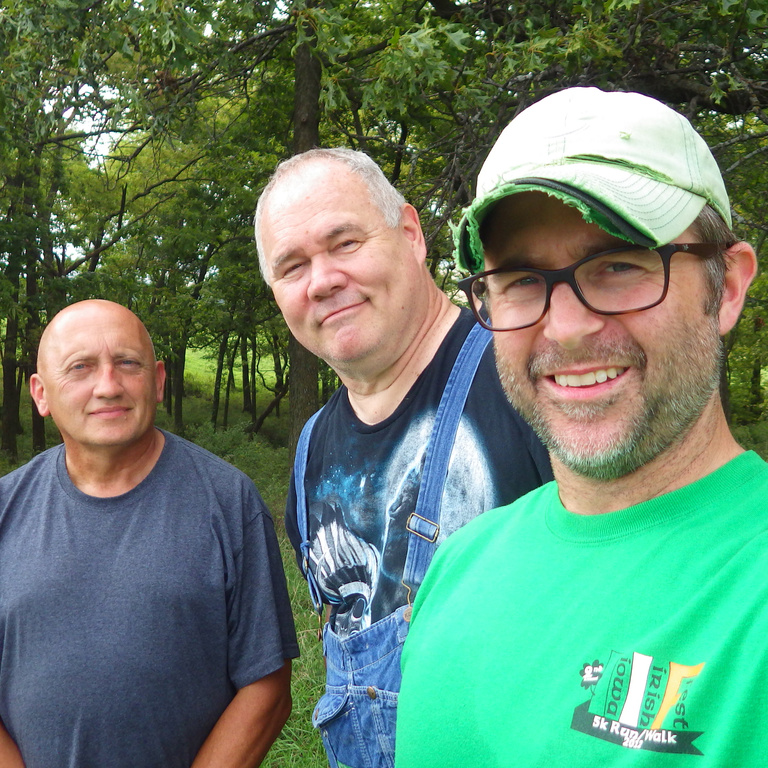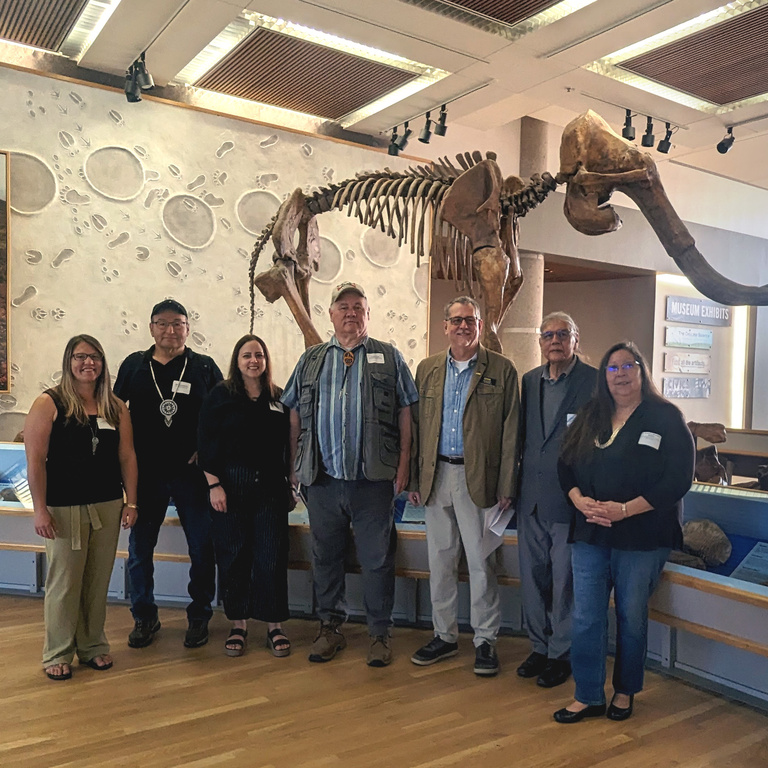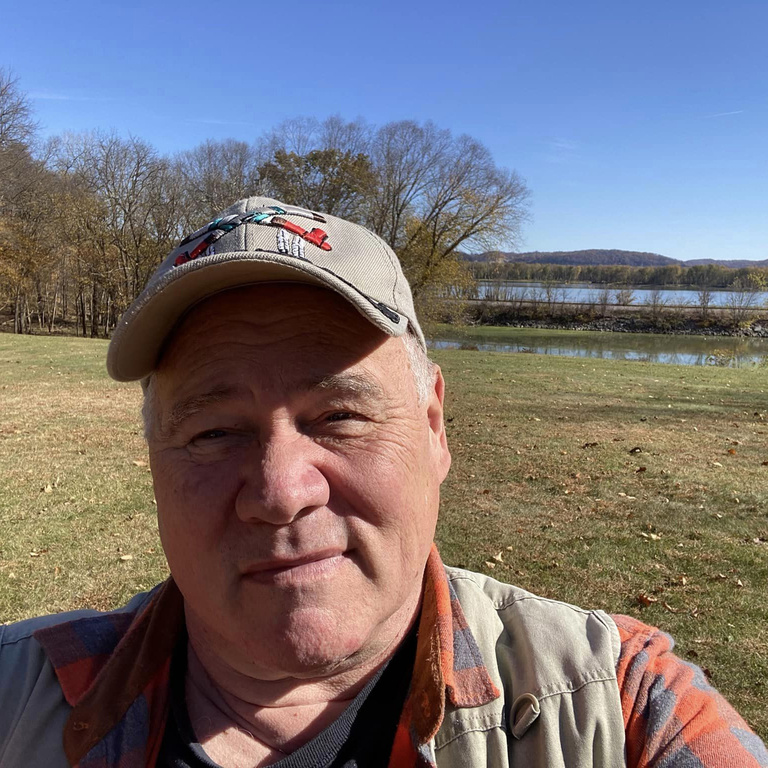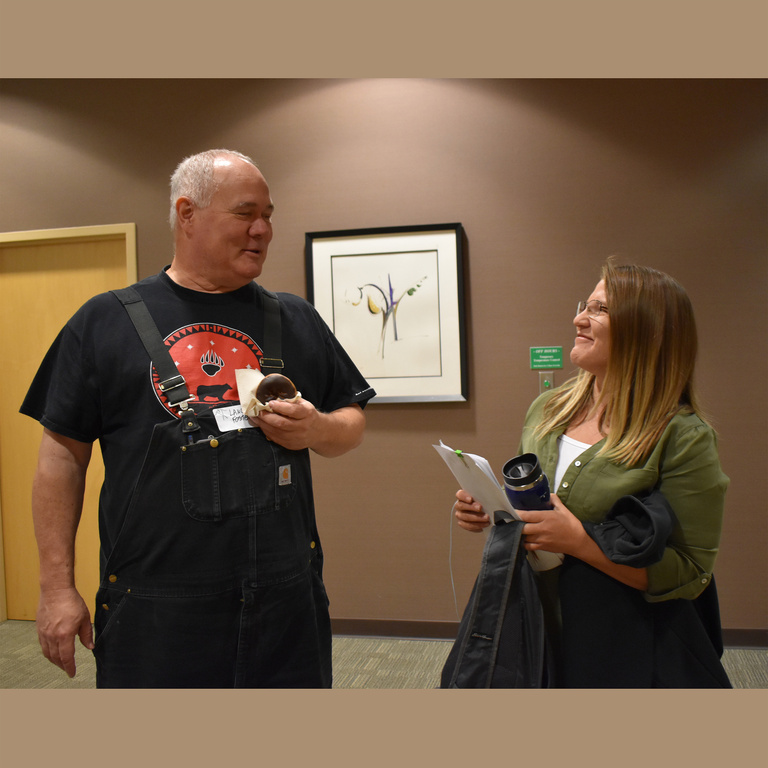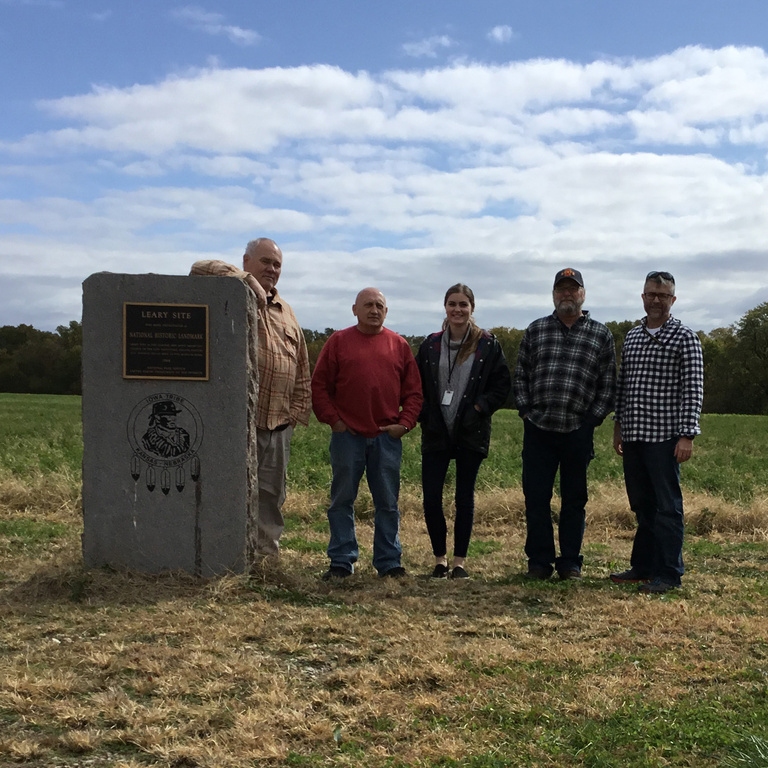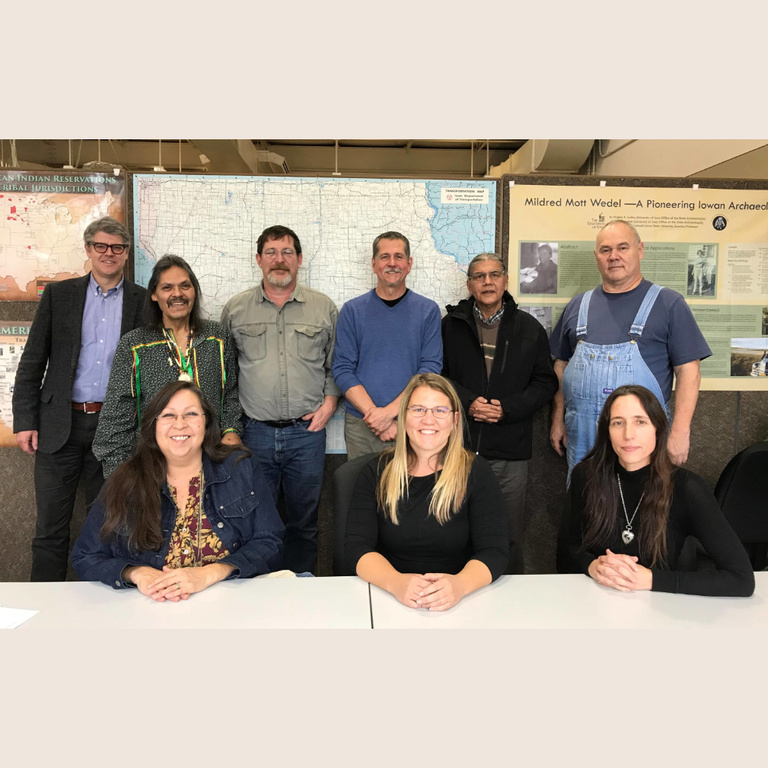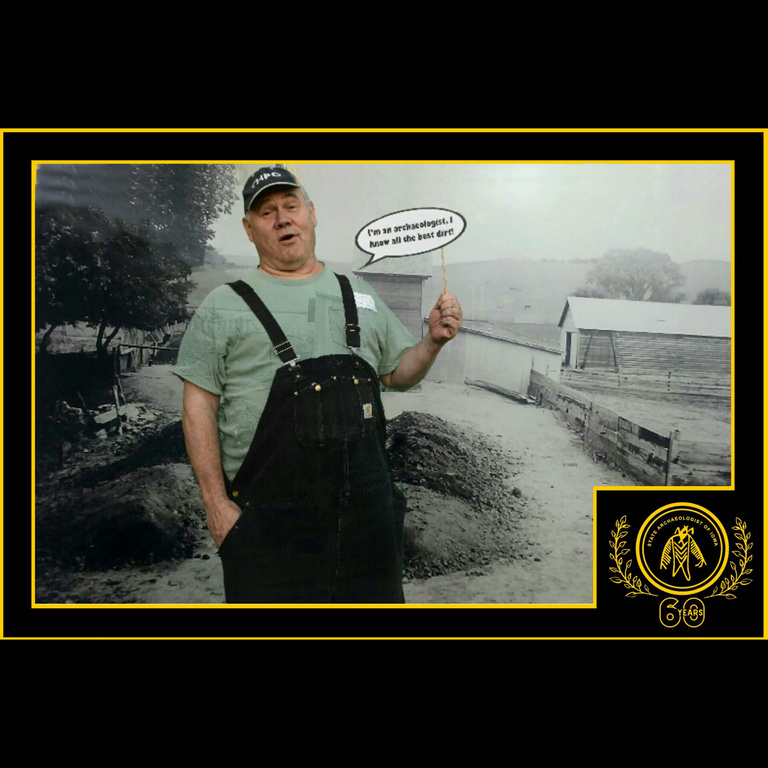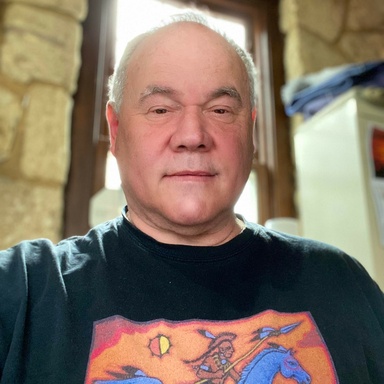
Lance Foster, Tribal Historic Preservation Officer (THPO) for the Iowa Tribe of Kansas and Nebraska, left this world (link to obituary) on January 12, 2025. The Iowa archaeological community will miss him immensely. Consultations, conferences, meetings, and social media banter truly won’t be the same without him. The deep friendships and working relationships he built and maintained will stand as an enduring legacy, and his contributions will inspire archaeologists and Tribal historic preservation professionals for generations to come. In every capacity that he served he was the best of mentors and left lasting impressions on all involved.
His accomplishments and special achievements in historic preservation are truly too numerous to document in this tribute, but there are many worth mentioning that stand out.
A long-time historic preservation professional, Lance began his career in 1990 as seasonal archaeologist for the USDA Forest Service–Helena National Forest. He received his undergraduate degree in anthropology (University of Montana) and dual master’s degrees in anthropology and landscape architecture (Iowa State University). He worked on Native American Graves Protection and Repatriation Act (NAGPRA) and compliance issues for over 20 years, formerly as the Director of Native Rights and Land and Culture at the Office of Hawaiian Affairs. Lance candidly admitted that his duality as an anthropologist and Indigenous person was both a benefit and a challenge. It gave him a deep understanding and unique perspective regarding cultural and historic law, environmental compliance, NAGPRA, archaeology, and cultural landscapes, which he brought to his historic preservation work.
As THPO since 2013, Lance demonstrated exemplary and outstanding execution of his preservation program responsibilities. During Lance’s tenure as THPO, he served as a leader, mentor, and role model in historic preservation on a regional and national level, as well as within his Tribal community.
Lance continually demonstrated a passionate commitment to his THPO responsibilities. In his position, along with Deputy THPO Alan Kelley, he focused on the Tribe’s reservation that straddles the eastern borders of Kansas and Nebraska and their ancestral territory originally centered in Iowa. His work also extended to Ioway homelands including Wisconsin, Michigan, Illinois, Minnesota, South Dakota, Nebraska, Kansas, and Missouri. The Tribal Historic Preservation Office (Office) remained fully functional under Lance’s leadership (and that of his colleague Alan Kelley) despite limited resources, a problem inherent to all THPOs.
The Iowa Tribe of Kansas and Nebraska Reservation and Community
On his reservation, one of Lance’s important THPO responsibilities was to sponsor and operate the Baxoje Wosgąci (Iowa Tribal Museum and Culture Center). At Baxoje Wosgąci, Lance worked to educate Tribal members and the general public about the history, language, genealogy, traditions, and culture of the Iowa/Ioway Tribe; in fact, he was one of the few members of his community who still spoke the Ioway language. He was also a renowned artist, with his works appearing in multiple exhibits and publications. He organized THPO sponsored classes to make drums, moccasins, and powwow regalia, among other crafts. His education efforts were truly a special achievement, extending beyond the reservation, with over 250 videos posted to Facebook and YouTube about Ioway language, culture, history, and his work as THPO.
Locally, Lance can be credited with advancing the protection of the Leary Site National Historical Landmark, which has suffered from farming and artifact collecting. The site is the largest Oneota site west of the Missouri River and includes 3000-year-old burial mounds and a trading village that was used by bison-hunting plains tribes. He also completed the National Register of Historic Places process to list the Iowa Tribe Community Building from the New Deal-Era, built as part of their WPA CCC Indian Division in the 1930s-40s. Until 2022, this building served as the THPO offices and museum. After years of lobbying the State of Kansas, Lance was instrumental in the transfer of ownership (from the Kansas State Historical Society) of the Iowa and Sac & Fox Mission to the Iowa Tribe of Kansas and Nebraska in 2021. Formerly a boarding school for Iowa and Sac & Fox children, the mission was located within the reservation until the treaty of 1854 ceded those lands. In 2022, Lance and the Tribe reopened the mission as a home for the THPO offices, historical exhibits, and community meeting/gathering space and renamed it The Iowa and Sac & Fox Mission Museum. It is featured as a unit of the Ioway Tribal National Park.
The establishment of the Ioway Tribal National Park (Baxoje Mowotananyi) in 2020 was one of Lance’s most significant accomplishments. The second of its kind in the United States, this 444-acre (and growing) park is located completely within the reservation. It will no doubt be an enduring legacy for the Tribe and provide a model for other Tribal Nations to create their own parks, fully under Tribal sovereignty. The park, currently accessible by Tribal permission and due to open to the public in 2025, fulfilled a long-time goal of Lance’s to preserve the stories and cultural traditions of the people who were connected to the landscape for centuries and protect its delicate ecosystem and natural resources. As the park’s founder and director, his vision particularly focused on Tribal youth, whom he hoped to connect to Ioway history, language, and the land. Lance established a formal connection to Effigy Mounds National Monument as a sister park.
Consultation and Representation Beyond the Reservation
Lance was well-respected by Midwestern and Plains Federal and state agencies, local governments, academic institutions, and Tribes, as he built countless enduring relationships and partnerships through reliable attendance, participation, and thoughtful communication during Tribal consultations, project collaborations, conferences, and preservation meetings. For over a decade, Lance was not only a pragmatic and respectful consulting partner, but he regularly took extra time to provide exceptional effort to improve understanding of his Indigenous perspective and served as a voice for many levels of historic preservation. He was known for his preference to seek a road to positive, constructive, and mutually beneficial resolution rather than engaging adversarially.
Lance was also committed to professional and Tribal service. He served as Vice-Chair for the Iowa Tribe of Kansas and Nebraska from 2019-2023, the responsibilities of that role through that time period were immense. He was the representative for the Southern Plains region of the National Association of Tribal Historic Preservation Officers. He served as Board Member at the Nature Conservancy in Nebraska, as Elder Advisor for the Great Plains Action Society, on the Advisory Committee for the Iowa State Historic Preservation Plan, and on the Indian Advisory Council of the University of Iowa Office of the State Archaeologist. He often stretched his own capacity to participate, a huge indication of his dedication to historic and cultural preservation and education. His partners across state and federal agencies benefited greatly from Lance’s time and effort in going the extra mile. Despite his intense schedule, Lance was always willing to engage with the public. He once said, "sharing our community history with anyone who asks is what I really enjoy.”
A particularly significant and long-term historic preservation effort that Lance was involved with as a Tribal representative was his involvement with the management of the Blood Run National Historic Landmark, which includes property on both the South Dakota and Iowa sides of the Big Sioux River. Lance was an early point of consultation for the South Dakota efforts to establish Good Earth State Park on the South Dakota side to better protect a large portion of the NHL in that state. On the Iowa side, starting in 2015, Lance became a key Tribal consultant for the development of a comprehensive Cultural Landscape Master Plan. This multi-year effort successfully developed a document built on Tribal, local, and state-level input that continues to guide the management of this archaeologically significant NHL. Lance was a founding member of the Blood Run Bi-state Advisory Committee and continued to actively participate in the biannual meetings of this group.
Lance has long been a leading voice with Tribal consultation and project partnerships across ancestral Ioway homelands in the state of Iowa and beyond. In particular, Lance has been a stalwart partner to many Iowa Department of Transportation (Iowa DOT) and Iowa Division of the Federal Highway Administration (FHWA) projects and activities. Lance has served on planning committees for numerous Iowa DOT/FHWA Tribal Summits. Beyond donating his time planning and preparing for Iowa’s Tribal Summits, in 2014 he presented a workshop entitled, “An Indigenous View of Landscape.” This presentation continues to be a widely respected and referenced contribution that speaks to Lance’s unique ability to share an Indigenous understanding with non-Indigenous partners and consulting parties. Lance regularly has shared sage advice for all of those in attendance.
One remarkable project that consumed a lot of time and energy was the Iowa DOT bank stabilization efforts in 2016-2017 at the Dixon Site (13WD8). The Dixon site was ancestral to the Ioway as well as other proto-Siouan speakers. Lance attended multiple on-site meetings, many of which occurred well before the undertaking was formalized due to the exposure of human remains. As was typical for Lance (and deputy THPO Alan Kelley) he showed up, shared, offered advice, and provided pragmatic solutions knowing that project partners were working to balance site preservation efforts with engineering to stabilize the roadway from swift and significant erosion effects. The help Lance offered to the Iowa DOT and other Tribes and Nations on this project and others was immeasurable. Lance served a similar role with the Iowa DOT’s 2017 mitigation video, Landscapes that Shape Us. This video tells the story of a remarkable landscape in western Iowa that contains geoglyphs, a site type that has been rarely encountered in the region. While planning for a major highway project, Lance worked with the Iowa DOT / FHWA to help assess and preserve these sites. When it came to tell the story to the public, Lance was willing to pitch in there too. In the end, the title for the mitigation video came from Lance’s interview. There are few people with Lance’s skill set who could articulate the complexities of Indigenous cultural resources and the ways that those places continue to connect with us today.
Lance served many roles in his support of Ioway homelands, and in one recent example he offered his cultural and artistic expertise. In autumn 2023 the Iowa DOT opened an earth lodge-themed rest area near Glenwood, Iowa. Lance’s mural entitled “Mahaci” greets guests as they enter the atrium of the facility. This mural depicts a Central Plains Tradition earth lodge across all four seasons as well as night and day. The mural offers a glimpse into Lance’s view of history, archaeology, and Indigenous tradition. In true Lance fashion, he helped the Iowa DOT approach other artists who might be interested in supporting the project. As is usually the case, three other artists secured mural pieces for the project. Lance helped tell the complex story of this place to over 200,000 visitors a year. It can be hard to find words that are fitting enough for Lance’s many contributions.
Immediately upon assuming the role of THPO for the Iowa Tribe of Kansas and Nebraska, Lance engaged with officials at Effigy Mounds National Monument (EMNM) in northeast Iowa. The park was embroiled in a pair of nationally significant controversies at the time due to past failures to comply with the requirements of the National Historic Preservation Act (NHPA), NAGPRA, and the ADA. Despite having to travel nearly 1000 miles round-trip for each formal consultation, Lance was among the most engaged of the 20 THPOs and Tribal cultural resource professionals the park consulted with at this challenging time.
Lance was particularly invaluable as EMNM took its initial tentative steps towards once again independently carrying out the requirements of NHPA in 2013. That year, park officials initiated what would become a three-year effort to develop the park’s first Cultural Landscape Plan. Lance attended every consultation and made significant contributions toward helping park officials understand the complexity of managing a landscape containing hundreds of burial sites. His contributions were particularly valuable as EMNM grappled with what had been previously believed to be a simple and straightforward issue – managing trees growing on or near burial mounds. Thanks to Lance’s contributions, the park is able to maintain the grounds near the mound sites in a far more sensitive and caring manner.
Lance was particularly engaged in helping EMNM develop a Long Range Interpretive Plan between 2018 and 2020. The park had formerly been presented to the public solely through the lens of professional archaeology. While the information presented was helpful to the public in many ways, it sorely lacked a Tribal perspective. Thanks to Lance’s contributions to this planning effort, the park is presented as a living, numinous landscape connected in both the past and present to a vibrant culture. In 2020, Lance was instrumental in organizing an enormously successful art exhibit at the park highlighting Iowa Tribe artists, and later that year and into 2021 (until interrupted by COVID), Lance helped organize a Winter Stories event that was literally filling the park’s auditorium.
During the troubled times at EMNM, Lance helped park officials to understand the importance of trust in the consultation process. By working patiently and consistently with park officials – even on issues where trust in the past had been horribly violated – Lance was instrumental in helping to heal old wounds and gradually develop a sense of trust between the park and its tribal partners.
Finally, Lance participated in a project known as In Effigy that resulted in a series of training videos that highlighted the lessons learned at EMNM. Despite the National Park Service never deeming the video series as mandatory training, it proved wildly popular within the NPS, and introduced thousands of employees to the importance of carrying out the requirements of cultural resource preservation laws. Lance was featured in these videos, and as a result had the opportunity to positively influence thousands of NPS and other federal officials across the nation due to his efforts.
Most importantly, Lance, as Iowa Tribe of Kansas & Nebraska THPO, maintained an enduring position of respect and standing among other Tribes. Lance was oftentimes deferred to because of his recognized experience and competent authority, and he was viewed as a reliable presence, particularly during complex and controversial consultations or in situations involving historic preservation policy. During his years of work with EMNM, Lance was often trusted by his peers among other Tribes consulting with the park to take the lead on critical issues. His consistent attendance and his thoughtful contributions were recognized as valuable by everyone and made it easier for Tribes who could not attend every consultation to know that Tribal perspectives were being represented. Lance was always careful not to speak for other Tribes and made sure his historic preservation partners knew this as well. He also regularly mentored fellow THPOs, particularly those just starting out, a service which goes beyond measure.
Suzanne (Wanatee) Buffalo poignantly expresses what she and many of us feel with Lance’s passing.
This is a great loss to everyone, even those who never met him. He was a kind, wise, creative, generous, humble man who leaned into strong headwinds his entire life. Never wanting to be a leader, Lance invariably found himself being one in all the worthy endeavors he was involved with. He leaves behind big shoes to fill, but he also left good directions and sound advice to follow. I will miss my colleague and friend.
Thank you, Finds-What-Is-Sought, for sharing part of your life with us and for finding so many good, beautiful things in this world.
Written by Elizabeth Reetz (Strategic Initiatives Director, University of Iowa Office of the State Archaeologist) with contributions from John Doershuk (Director and State Archaeologist, University of Iowa Office of the State Archaeologist), Jim Nepstad (Retired Superintendent, Effigy Mounds National Monument), Dan Higginbottom (Retired, Iowa State Historic Preservation Office), Brennan Dolan (Cultural Resources Team Lead/Tribal Liaison, Iowa Department of Transportation), Suzanne (Wanatee) Buffalo (OSA Indian Advisory Council member and Meskwaki Tribal member), and Lara Noldner (Bioarchaeology Director, University of Iowa Office of the State Archaeologist)
